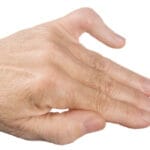A tear in the stabilizing structure under your foot is a common cause
Pain in the ball of the foot and swelling on top of the foot are symptoms of a condition that’s both common and often misdiagnosed. The condition — called a plantar plate tear — can happen either suddenly or as a result of chronic, repetitive stress over time.
The plantar plate is a fibrous structure under your foot that supports and stabilizes the joints between the toe bones and the bones of the foot. (These are the metatarsophalangeal joints).
The plantar plate is implicated in forefoot pain much of the time.
What causes a plantar plate tear?
There are 3 causes of plantar plate tears:
Structural. A bunion or crossover deformity (when one toe crosses over the one next to it) can put added pressure under the foot.
Traumatic. “A plantar plate can tear from an injury, like tripping over a dog’s leash or your are running and all of a sudden you feel a sharp, shock-like, stabbing sensation across the ball of the foot.
Chronic, repetitive stress. With age, the plantar plate can wear down and be susceptible to tearing. Any active adult (usually over age 45) can have a plantar plate tear. But people who spend a lot of time on the balls of their feet (think: working on ladders or wearing high heels) and those who bend their toes a lot are susceptible.
The most common site for a plantar plate tear is under the second toe, but it can happen under any toe.
Why plantar plate tears are often misdiagnosed
Even though plantar plate tears are common, they aren’t always recognized. It’s not unusual for someone to go many months and not realize this is the source of their pain,.
A plantar plate may be misdiagnosed as:
- A neuroma (a pinched nerve).
- Metatarsalgia (inflammation in the ball of the foot).
- Arthritis.
How to find relief from a plantar plate tear
Plantar plate tears are diagnosed with a physical exam, medical history and X-rays. An MRI or ultrasound may also be used.
Treatment involves placing and holding the affected toe in a position that allows the tear to heal. I flex the toe 10 degrees, bringing it lower than the adjacent toe, so the edges of the torn plantar plate come together. Then, I crisscross tape along the bottom of the foot to hold the toe down.
There are also splints that can be used to hold the toe in this position. It typically takes three to six months to heal. patients to wear stiff-soled shoes and shoe inserts with metatarsal pads.
If these measures don’t help or if a deformity has already formed, surgery is an option. It’s often done in conjunction with surgery for other foot deformities.





